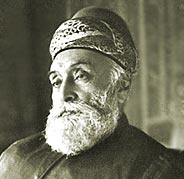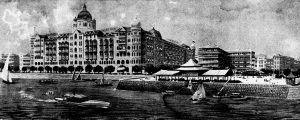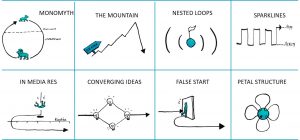Inspiration from injustice
It has been a while since I have posted a new general brand story. My excuse is that I’m working on two other books of brand stories at the moment which I will tell you, dear reader, about at a later date. In the meantime I hope you enjoy this one…
I must have written over 150 stories about the origins of brands and have been amazed at the variety of sources of the inspiration for those brands. Some were based on someone’s passion for their hobby, some have been created out of love for someone or something, and some have been the result of the creativity needed to find a better way of doing sometimes. What surprised me, however, was how many were driven by more negative experiences, like personal problems, shame, embarrassment and even anger.
I recently attended a book launch at the Taj hotel in London and perhaps not too surprisingly started to wonder about the origins of the brand. A couple of days and some research later, I’m glad I did because I can now add prejudice to my list of brand inspirations.

Jamsetji Nusserwanji Tata came from the Parsee community in India. He had made his fortune in the cotton trade and then branched out into other associated industries like mills, hydroelectric works and a shipping line. He then moved onto numerous other businesses areas.
One day, (no-one seems to know the exact date) towards the end of the 19th century, Jamsetji Tata decided to take a friend and colleague to have lunch at the grand Watson Hotel in the fashionable part of Bombay, or Mumbai as it is now known.
He was met with a sign that read “No Indians or dogs” and he and his friend were turned away.
Spurred on by this injustice and prejudice, he decided he would build a hotel that would be the envy of every other hotel in the city; one that would attract and allow entry to Europeans, Indians and people of all races.
Jamsetji Tata duly applied for and received the necessary permissions to build a Hotel at Apollo Bunder on the Port of Bombay. He hired two architects, Sitaram Khanderao Vaidya and D. N. Mirza, to design what would become the Taj Palace.
Unfortunately, Vaidya died before the plans were completed and the hotel built. Tata was forced to find a new architect and in a fitting coincidence chose W. A. Chambers, who had earlier designed the exclusive Watson Hotel. They in turn worked with F. W. Steven, who designed the Victoria Terminus, now known as the Chattrapati Shivaji Terminus and you can still see the influence that had on the final design of the hotel.

With its aim to attract all people from around the world, the final design incorporates elements of many architectural styles including Indo-Saracenic, Victorian and Gothic. It has Romanesque details, Edwardian touches on the roof and windows like mashrabiya casements of Arab houses.
While the hotel was being built, Tata visited London, Dusseldorf, Berlin and Paris and handpicked the furnishing, fabrics and lighting fixtures. In Paris he attended the opening of the Eiffel Tower and was so inspired by it that he ordered 10 spun iron pillars, which still hold up the ceiling of the ballroom today.
The hotel opened on 16 December 1903.
Sadly, Jamshetji Tata was not able to enjoy the hotel, nor see its success, as he passed away in 1904.
As of 2018, Taj hotel group comprises a total of 100 hotels and hotel-resorts, with 84 across India and 16 in other countries, including Bhutan, Malaysia, Maldives, Nepal, South Africa, Sri Lanka, UAE, UK, USA and Zambia. Their doors are open to everyone, no matter what their colour, creed or nationality.

MORAL: Brands can be a force for good and help address injustice. Can your brand do more than operate successfully in its marketplace?

